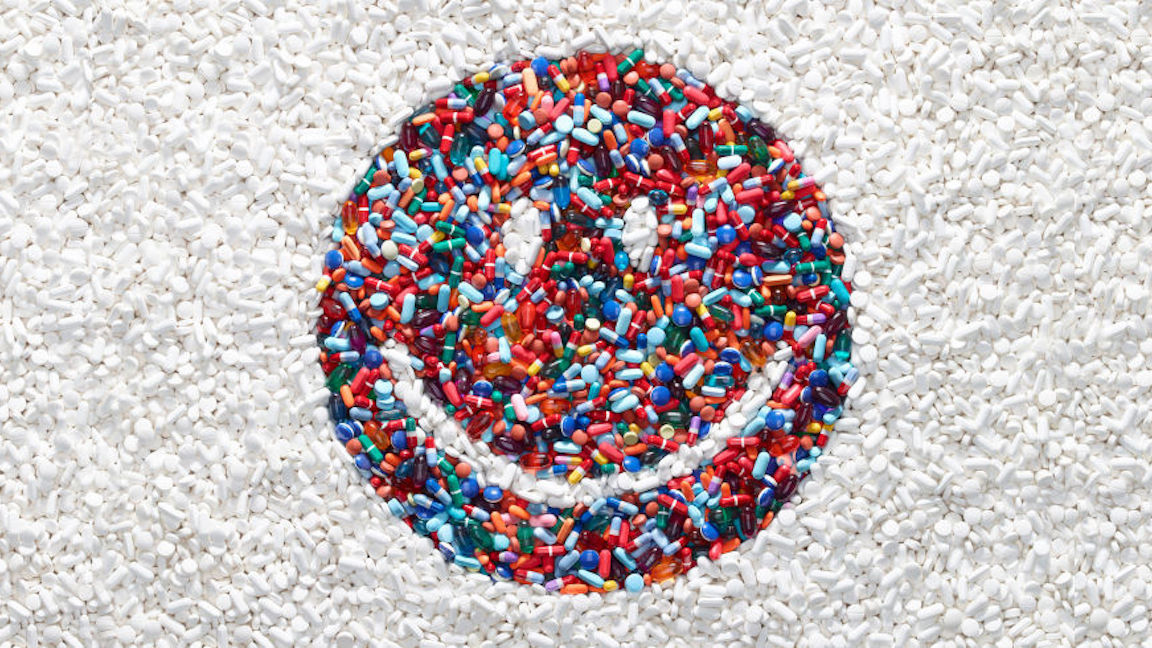Pop a molly for PTSD

(Getty Images, 2015)
The conclusion of the first 2010 study is that 83 percent of the MDMA psychotherapy participants were cured; in contrast, only 25 percent of patients were cured after only psychotherapy (Chason 2014)
“Everyone should know this stuff” Level
In the age of medical marijuana, do you think it is crazy to start using edgier drugs for medical purposes? Dr. Michael Mithoefer from the Multidisciplinary Association for Psychedelic Studies did a study in 2010 on the effectiveness of using pure MDMA with psychotherapy to treat PTSD (Chason 2014). PTSD’s symptoms of flashbacks, hopelessness, and paralyzed emotions affect more than eight million U.S. adults each year (McMillian 2015). PTSD treatment usually includes therapy along with antidepressants like Paxil and Zoloft that temporarily ameliorate PTSD; whereas, four FDA-approved, phase II clinical trials in Boulder, Charleston, Vancouver, and Beer Yaakov, Israel have shown that MDMA therapy is a more effective treatment (McMillan 2015).
The trials lasted 5 months and included 98 subjects who took between 75 and 188 milligrams of MDMA during three-five day therapy sessions, in addition to 20 hours of non-drug therapy (McMillan 2015). The conclusion of the first 2010 study is that 83 percent of the MDMA psychotherapy participants were cured; in contrast, only 25 percent of patients were cured after only psychotherapy (Chason 2014). In 2014, a follow up study demonstrated that the majority of that 83 percent remained PTSD symptom-free; therefore, MDMA and psychotherapy may be a long-term cure (Chason 2014).
MDMA gives feelings of “euphoria, emotional warmth, and empathy,” and these are the values that make MDMA a therapeutic tool (Chason 2014). Mithoefer believes that MDMA helps by providing more emotional clarity and confidence so that patients can address their trauma and move on from that pain (Chason 2014). The process is called memory reconsolidation: remembering and then changing memories to help patients come to terms with their trauma (McMillan 2015). The patients are then able to reprogram their brains to accept the trauma (McMillan 2015). A patient of Mithoefer’s study described MDMA as making him more open to emotional and painful conversation; therefore, it wasn’t the drug that made him feel better, but the conversation that the drug facilitated (Chason 2014). Another MDMA therapy patient, Brenda Hope, describes her experience, as “I didn’t feel f****d up, I felt really empowered, like I could direct my mind where I needed to” (McMillan 2015).
Although the research is promising, more studies have to commence before MDMA can be legalized for medical purposes because there are potentially dangerous side effects (Chason 2014). The National Institute of Drug Abuse report the side-effects of MDMA as: muscle tension, involuntary teeth clenching, nausea, blurred vision, faintness, chills, sweating, hyperthermia, liver failure, kidney failure, cardiovascular failure, and in extreme cases, death (Chason 2014). However, these may only be the side-effects when using unregulated and extreme doses of MDMA, such as taking the club-drug, Molly (McMillan 2015).
Many researchers see MDMA therapy methods as extremely promising, but some people fear that this is the first step towards decriminalizing dangerous drugs and then using them for medical purposes; thus making patients believe they are safe, when they may not be (McMillan 2015). This is just one of the many obstacles that the Multidisciplinary Association for Psychedelic Studies faces, in addition to the hurdle of an estimated 20 million dollars it will take to get FDA approval for MDMA (McMillan 2015). Nevertheless, this concept of using MDMA psychotherapy is progressing and expanding; for example, studies at Johns Hopkins, Imperial College London, and the University of New Mexico are studying LSD and psilocybin (magic mushrooms) as antidotes for addiction, anxiety, and depression (McMillan 2015).
“For geniuses only” Level
Scientists’ understanding of PTSD is that people with PTSD have increased activity in the amygdala, the fear center of the brain, and decreased activity in the prefrontal cortex and the hippocampus; in summary, these three sections of the brain are irregularly operating and this makes it impossible for PTSD patients to process their experiences normally (Benson 2014). However, after taking MDMA, the uneven activity evens out and allows for effective therapy to be done as the MDMA allows for people to open up emotionally and decreases the fear that numbs patients (Benson 2014). There is a scientific reason for the feeling of trust between people after consuming MDMA, and that is the hormones that are released under the influence of MDMA (NPR 2015). The science behind MDMA explains its success: MDMA releases serotonin, which regulates mood, dopamine, which commences emotional response, and oxytocin, the hormone of trust and intimacy (McMillan 2015).
Impress your friends and family with these three related facts:
Fact 1: A common misconception is that PTSD only affects war veterans; PTSD is common in civilians and 1 and 10 women will experience PTSD in their lives (McMillan 2015).
Fact 2: Before MDMA was classified as a schedule I substance in 1985, the therapist Leo Zeff pioneered using MDMA and therapy in intensive day long sessions to treat similar mental disorders (McMillan 2015).
Fact 3: The Drug Enforcement Agency reported that only 13% of Molly found in New York from 2009-2013 contained any amount of MDMA (Chason 2014).
Author: This article was written by Rebecca Bernstein, a senior at Choate Rosemary Hall in Wallingford, CT. Rebecca’s spirit animal is a sheep. Someday, Rebecca will be famous for eating a lot of Nutella from every country on every continent.

Works Cited
Benson, T. (2015). Scientists are testing MDMA as a PTSD treatment for veterans. The Verge. (Date of access: February 1, 2016). http://www.theverge.com/2015/4/24/8471817/mdma-ptsd-therapy-veteran
Chason, R. (2014). Studies Ask Whether MDMA can cure PTSD. USA TODAY. (Date of access: February 1, 2016). http://www.usatoday.com/story/news/nation/2014/07/11/mdma-molly-therapy-ptsd-cure/10683963/
McMillan, K. (2015). Is ecstasy the key to treating women with PTSD?. Marie Claire. (Date of access: February 11, 2016). http://www.marieclaire.com/health-fitness/news/a15553/mdma-ecstasy-drug-ptsd-treatment/

Leave a Reply